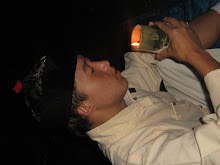RONGSA CULTURE
1. The collective form of the original ten Lepcha families who are claimed to have descended from the primogenitors of the Lepcha race, Fudong thing and Nazong Nyu. These ten families later became the original ten clans and are also associated with the folktale of Azor bongthing and the slaying of Laso Mung. The Lepcha refer to this collective form in every cultural as well as social aspect of lives. –RONGKUP KATI
2. The Lepcha syllabic scheme also the book of grammar rules for Rong aring. It has been described as the Power of words and as such enables a Lepcha to improve his fluency, force and rhythm of his speech. Using this set of rules Lepcha are known to have made 540 different sounds by using just one alphabet “K”. LAZAONG
3. Lepchas of yore prepared these manuscripts which fall under different categories some merely recording of facts while others are literary works but the most important of all – some of them are holy to the Lepcha and as such have very high religious value. NAAMTHAR
4. The Lepcha medicine man or the Lepcha healer. He is known to restrict his medicinal practices and prescriptions only to Lepcha community, and he does not share or offer the same to the outsiders. He believes that if his secret traditional knowledge of using plants is disclosed to any unauthorized person, the plants under use would produce adverse effects, and he may encounter ill-fate generated from the rage of the supreme deity of medicinal plants in the forest. This non-sharing attitude must have been one of the strongest reasons for the decline of this archaic system of medicine. MAON DAOK
5. The annual lepcha worship of Mount Kongchen Chu (Khangchenjonga) originally performed by the Bongthing of Nung village in Dzongu which later was adopted into Pang Lhabsol, the festival of Unity among the Lepchas and the new comers Bhutias of Nye Mayel Lyang. This festival was conducted in secrecy by the latter Buddhist Chogyals to appease the Gods of Lepchas.
6. The collection of ancient mythology, legends, and other folklore which includes stories of birds, animals and every creature in the nature narrated by older members of the family in the evenings. These stories also include tales that impart knowledge and education to the youngsters about the way of life and the primary traits required for survival as a Lepcha. LUNGTEN SUNG
7. The figurative form of Lepcha language used by Lepcha Mun and Bongthings while offering prayers. TUNGBAOR RING




